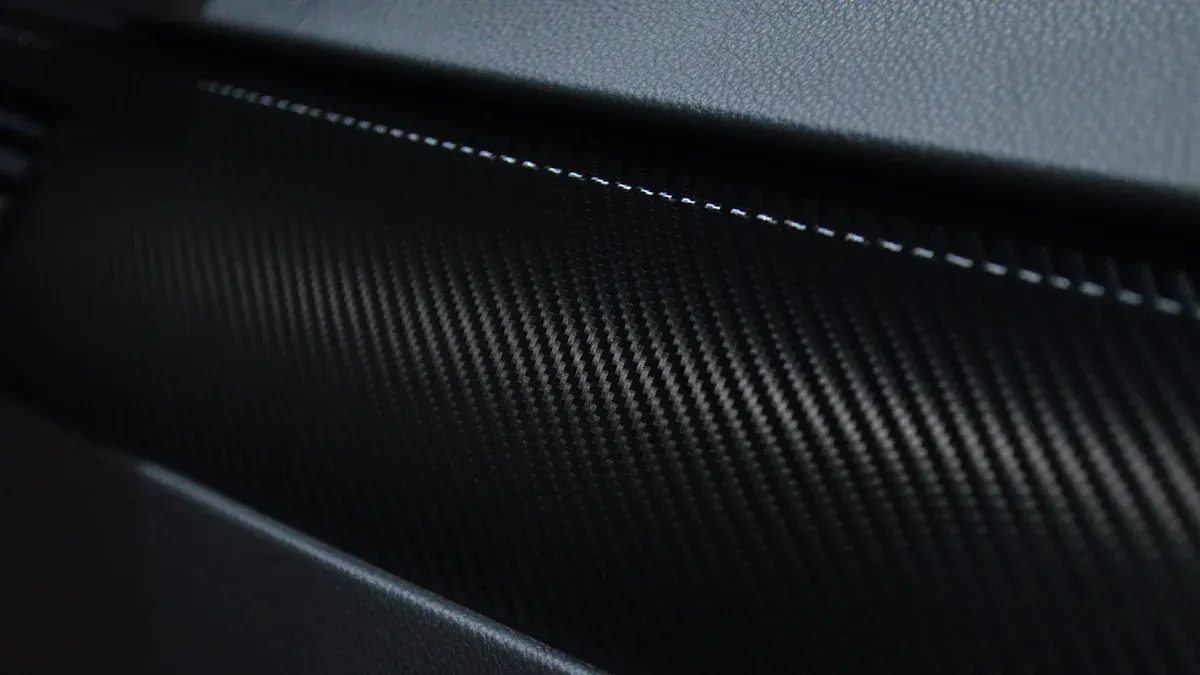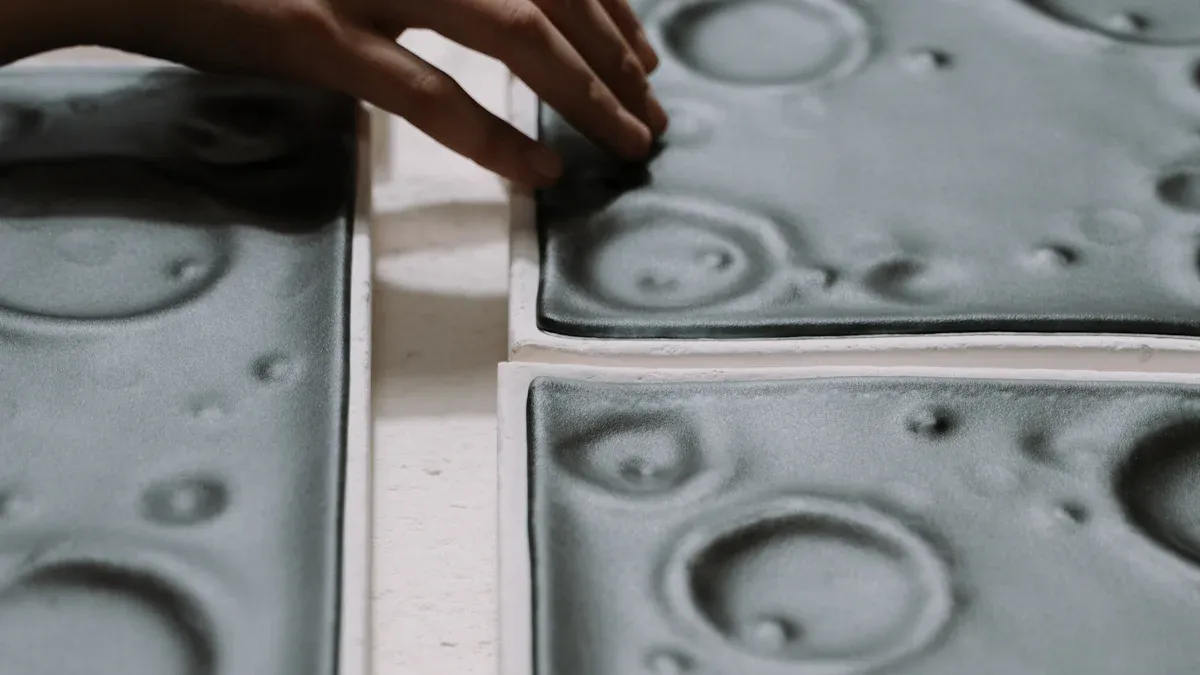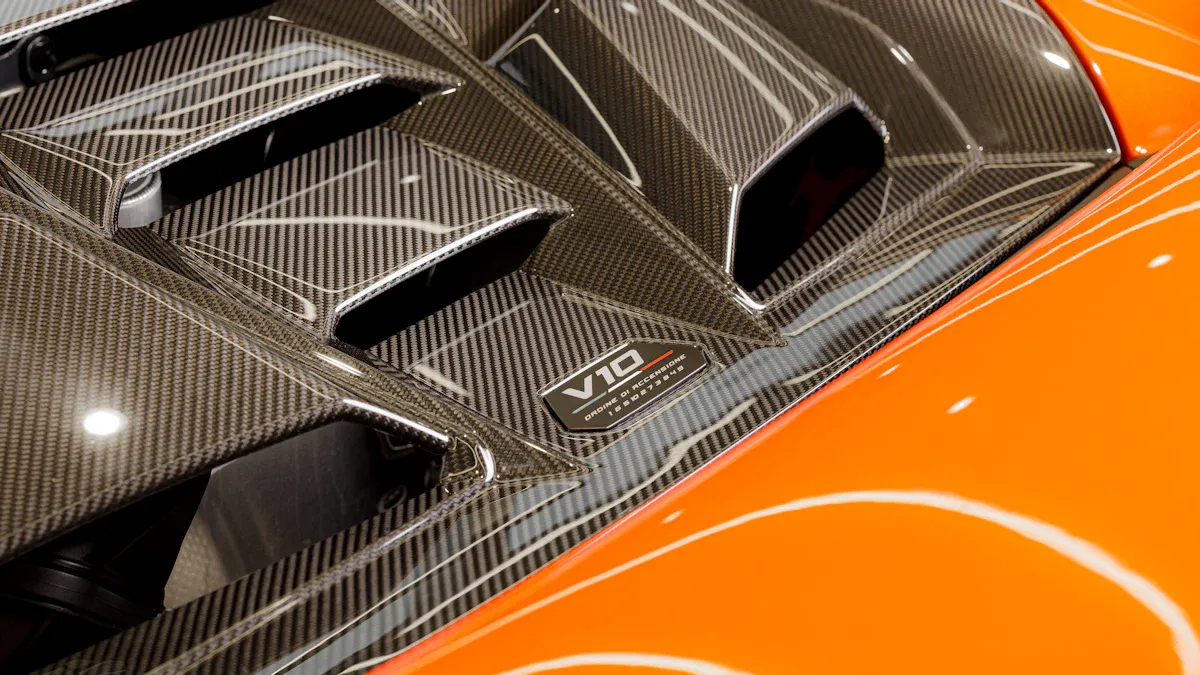
Carbon fiber has revolutionized the automotive industry by enabling lightweight, durable, and high-performance components. To fully harness its potential, you must optimize the injection molding process. This method allows the creation of complex shapes with precision, making it ideal for carbon fiber-reinforced plastic (CFRP) parts.
Here’s why optimization matters:
1. It supports high-volume production, essential for modern automotive demands.
2. Advancements in technology now reduce cycle times and material waste, boosting efficiency.
3. Continuous improvement programs enhance quality and energy efficiency, ensuring sustainable manufacturing.
By focusing on precision and innovation, you can achieve exceptional results while meeting industry standards.

Carbon fiber has become a cornerstone material in automotive manufacturing. Its lightweight nature and exceptional strength make it ideal for creating durable yet fuel-efficient vehicles. By reducing the weight of auto parts, carbon fiber helps improve acceleration and handling. It also enhances safety by absorbing energy during collisions. Manufacturers rely on this material to meet modern demands for performance and sustainability.
The growth of carbon fiber use in the automotive industry highlights its importance. For example, market data shows that the global carbon fiber market size is projected to grow from $6.09 billion in 2023 to $10.91 billion by 2032, with a compound annual growth rate (CAGR) of 6.70%. This trend reflects the increasing adoption of carbon fiber in vehicle production.
Carbon fiber stands out due to its unique properties. It is five times stronger than steel while being significantly lighter. This strength-to-weight ratio makes it perfect for manufacturing carbon fiber parts that require durability without adding unnecessary bulk. Additionally, carbon fiber resists corrosion, ensuring long-lasting performance in harsh environments.
Another key property is its ability to maintain structural integrity under extreme conditions. Whether exposed to high temperatures or heavy loads, carbon fiber components remain stable. These characteristics make it a preferred choice for injection molding processes in automotive applications.
Carbon fiber-reinforced components offer numerous benefits that elevate vehicle performance. A study found that using a sandwich carbon fiber reinforced plastic (CFRP) roof panel can reduce mass by up to 68% compared to traditional materials. This weight reduction directly improves fuel efficiency, as lighter vehicles consume less energy to accelerate and maintain speed.
Moreover, carbon fiber enhances crashworthiness. Studies show that CFRP absorbs energy effectively during impacts, making vehicles safer for passengers. Its superior strength-to-weight ratio also boosts overall performance, allowing manufacturers to design cars that are both efficient and reliable.
By incorporating carbon fiber into auto parts, you can achieve a balance between sustainability, safety, and performance. This material continues to shape the future of automotive manufacturing.

Choosing the right material is the foundation of successful automotive injection molding. You must carefully analyze the properties of carbon fiber-reinforced polymers to ensure they meet the demands of high-performance applications. Factors like stress, temperature, and aging play a critical role in determining material suitability. For instance, understanding how these factors interact helps you prevent failures in engineered plastic products.
With over 90,000 commercial plastic materials available, selecting the best option can be overwhelming. Engineers often evaluate environmental conditions, application requirements, and material properties to make informed decisions. This process ensures that the chosen material delivers optimal performance and reliability.
| Evidence | Explanation |
|---|---|
| Engineers must quantitatively analyze material properties, environmental factors, and application requirements. | This emphasizes the critical nature of material selection in ensuring optimal performance and reliability in carbon fiber injection molding. |
| The relationship between stress, temperature, and aging is complex. | Understanding these relationships is essential to prevent catastrophic failures in engineered plastic products. |
| There are over 90,000 commercial options for plastic materials. | The vast number of options necessitates careful consideration and analysis to select the most suitable material for specific applications. |
By prioritizing material selection, you can enhance the durability and cost efficiency of carbon fiber molds while meeting the demands of modern automotive production.
Effective mold design is crucial for producing high-quality carbon fiber components. You need to focus on precision and innovation to achieve the desired geometry and surface finish. Advanced mold technology, such as vacuum-tight sealing and pressurized air-assisted ejector pins, ensures consistent results. These features are particularly important for creating class A components with superior surface quality.
Innovative gap impregnation processes have revolutionized mold design. This technique enables automated production of continuous fiber-reinforced sandwich composite structures. It also reduces cycle times, making it ideal for high-volume automotive injection molding. For example, this method has achieved a weight reduction of about 60% for carbon fiber-reinforced plastics compared to traditional materials.
| Evidence Description | Key Features |
|---|---|
| Innovative gap impregnation process | Enables automated production of continuous fiber-reinforced sandwich composite structures with high surface quality and short cycle times. |
| Mold technology advancements | Focus on pressurized air-assisted ejector pins, vacuum-tight sealing, and specially treated mold surfaces for class A components. |
| Weight reduction achievement | Achieved a weight reduction of about 60% for CFRP components compared to traditional materials. |
By investing in advanced tooling and mold design, you can improve production efficiency and deliver high-performance applications that meet industry standards.
Optimizing the injection molding process is essential for achieving consistent results. You must follow a systematic approach to ensure the resin flows evenly and impregnates the preform effectively. Below is a step-by-step outline of the process:
This process incorporates advanced sensors, such as capacitive sensors in resin traps and dielectric sensors, to monitor resin cross-linking. These tools help you maintain a correlation between process parameters and the quality of the final component. For example, manufacturing a CFRP engine hood requires approximately 2800 ml of resin injected within 35 seconds. The flow gaps close within 10 seconds, completing the injection and compression phase in just 45 seconds.
By optimizing the injection molding process, you can enhance production efficiency, reduce cycle times, and ensure the consistency of fiber-reinforced polymers in high-volume manufacturing.
Properly managing material flow and fiber orientation is essential for producing high-quality carbon fiber components. You need to ensure that the fibers align correctly during the injection molding process to achieve optimal strength and durability. Misaligned fibers can weaken the final product, reducing its performance in automotive parts production.
To address this, you can use advanced simulation techniques. These include injection molding process simulation, micromechanical modeling, and structural simulation. These methods help you predict how fibers will orient during the molding process. Accurate modeling of fiber orientation is critical because it directly impacts the mechanical behavior of the final component. Verification techniques, such as microscopic analysis or computed tomography imaging, allow you to confirm fiber alignment and refine your process.
| Aspect | Description |
|---|---|
| Fiber Orientation Importance | Accurate modeling of fiber orientation is crucial for predicting mechanical behavior of fiber-reinforced composites. |
| Simulation Methodology | Integrative simulation methodology includes injection molding process simulation, micromechanical modeling, and structural simulation. |
| Verification Techniques | Fiber orientation verification can be done through microscopic analysis or computed tomography images, which are becoming standardized in research. |
By focusing on fiber orientation, you can enhance the strength and reliability of your automotive parts production.
Defects such as warping and shrinkage can compromise the quality of carbon fiber components. These issues often arise due to uneven cooling or improper resin distribution during the molding process. You can prevent these problems by carefully controlling the temperature and pressure within the molds.
Research has shown that optimizing the co-injection molding process can significantly reduce warping and shrinkage. For example, a study published in Polym. Eng. Sci. demonstrated how precise control of molding parameters minimizes these defects.
| Title of Study | Year | Journal | DOI |
|---|---|---|---|
| Study of Shrinkage and Warpage in Microcellular Co-Injection Molding | 2005 | Polym. Eng. Sci. | 10.1002/pen.20410 |
By implementing these strategies, you can ensure that your components maintain their intended geometry and strength.
Consistency is key when scaling up to high-volume production of carbon fiber parts. You must establish strict quality control measures to maintain uniformity across all components. This includes monitoring cure parameters such as temperature, pressure, and time during the molding process.
Defining clear process specifications is another critical step. You should control environmental factors like cleanliness, temperature, and humidity to ensure repeatability. Non-destructive inspection methods, such as using sound waves to detect internal defects, can help you verify the integrity of each part without damaging it.
| Quality Control Aspect | Description |
|---|---|
| Cure Parameters | Control aspects such as temperature, pressure, and time during the curing process to ensure part chemistry meets standards. |
| Process Specifications | Define working environment parameters, including cleanliness, temperature, humidity, and inspection tolerances. |
| Quality Control Procedures | Outline how to meet criteria from part drawings and specifications, ensuring repeatability and traceability in processes. |
| Non-Destructive Inspections | Use sound waves to check for internal defects like air pockets or delamination, ensuring part integrity. |
By adhering to these practices, you can achieve consistent results in high-volume production while maintaining the strength and durability of your carbon fiber components.
Perfecting injection molding for carbon fiber auto parts requires attention to detail at every stage. You must focus on material selection, mold design, and process optimization to ensure high-quality results. These steps not only improve performance but also reduce waste and production time.
Precision, innovation, and sustainability are essential in modern automotive manufacturing. Companies like Kautex Textron lead by example. They prioritize decarbonization, use recycled materials for prototypes, and aim for carbon neutrality by 2050. Their commitment highlights how innovation can align with environmental goals.
By adopting these best practices, you can create durable, efficient, and eco-friendly components that meet industry demands.
Carbon fiber offers a high strength-to-weight ratio. It is five times stronger than steel but much lighter. This makes it perfect for creating durable, fuel-efficient vehicles. Its resistance to corrosion and ability to perform under extreme conditions further enhance its suitability for automotive manufacturing.
Injection molding allows you to create complex shapes with precision. It ensures even resin distribution and fiber alignment. This process reduces waste and shortens production cycles, making it ideal for high-volume manufacturing of carbon fiber-reinforced parts.
You may face issues like fiber misalignment, warping, or shrinkage. These problems can weaken the final product. Advanced simulation techniques and precise control of temperature and pressure help you overcome these challenges during manufacturing.
You must establish strict quality control measures. Monitor cure parameters like temperature and pressure. Use non-destructive inspection methods to detect defects. These practices ensure uniformity and reliability in carbon fiber components.
Sustainability reduces environmental impact. Using recycled materials and optimizing processes minimizes waste. Companies that prioritize sustainability align with global goals for reducing carbon emissions while maintaining high-quality manufacturing standards.